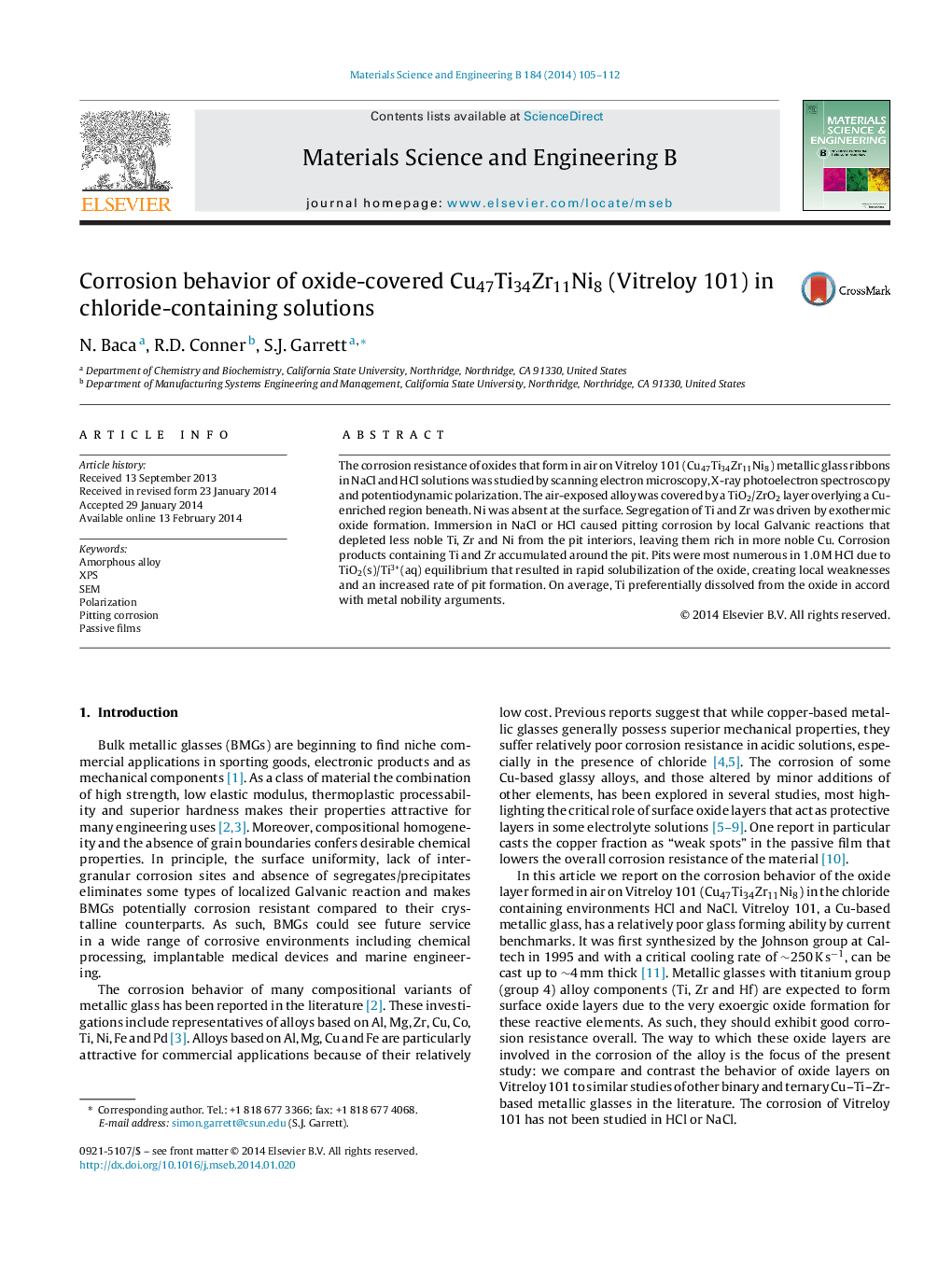| Article ID | Journal | Published Year | Pages | File Type |
|---|---|---|---|---|
| 1528831 | Materials Science and Engineering: B | 2014 | 8 Pages |
•Enrichment of Ti/Zr (as TiO2/ZrO2) and depletion of Cu/Ni due to thermodynamically driven segregation.•Dominant corrosion mechanism is pitting.•Pit interiors were depleted of Ti and Zr due to equilibrium solubilization of oxide layer.•Corrosion can be explained by equilibrium and metal nobility arguments.
The corrosion resistance of oxides that form in air on Vitreloy 101 (Cu47Ti34Zr11Ni8) metallic glass ribbons in NaCl and HCl solutions was studied by scanning electron microscopy, X-ray photoelectron spectroscopy and potentiodynamic polarization. The air-exposed alloy was covered by a TiO2/ZrO2 layer overlying a Cu-enriched region beneath. Ni was absent at the surface. Segregation of Ti and Zr was driven by exothermic oxide formation. Immersion in NaCl or HCl caused pitting corrosion by local Galvanic reactions that depleted less noble Ti, Zr and Ni from the pit interiors, leaving them rich in more noble Cu. Corrosion products containing Ti and Zr accumulated around the pit. Pits were most numerous in 1.0 M HCl due to TiO2(s)/Ti3+(aq) equilibrium that resulted in rapid solubilization of the oxide, creating local weaknesses and an increased rate of pit formation. On average, Ti preferentially dissolved from the oxide in accord with metal nobility arguments.
